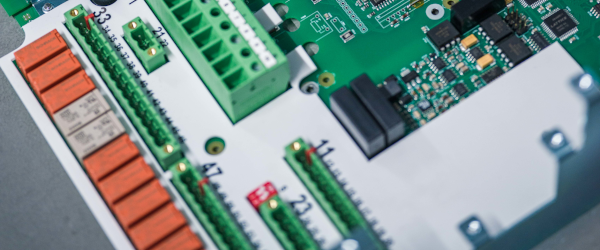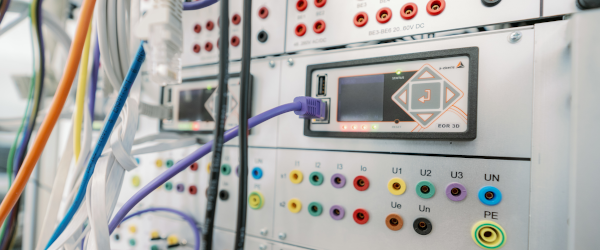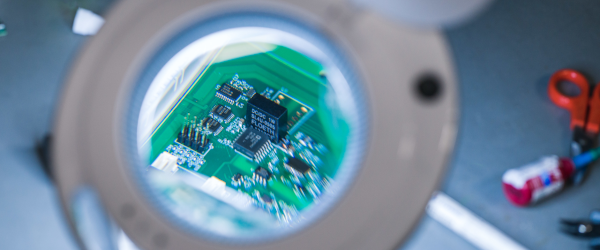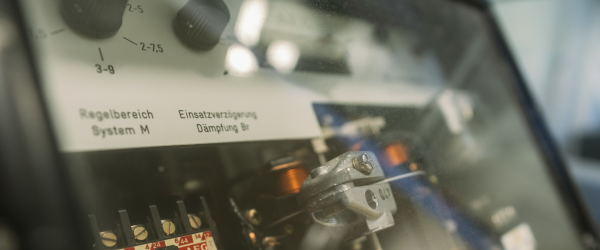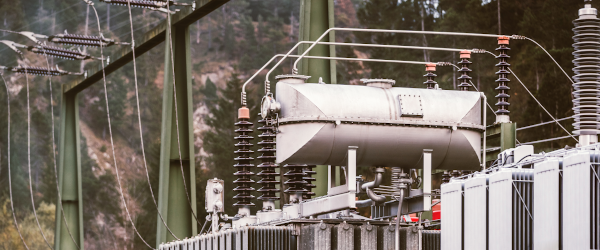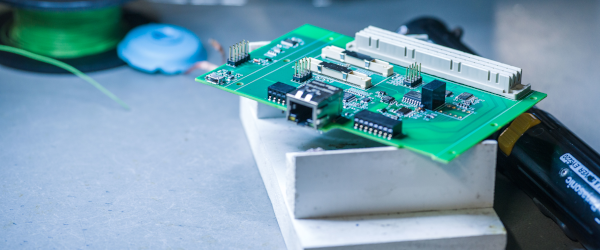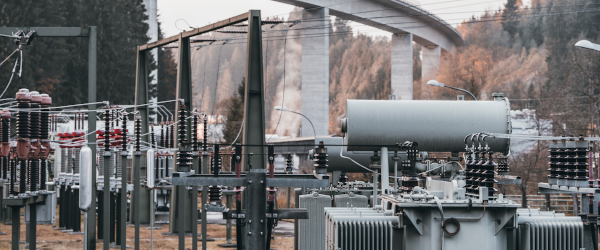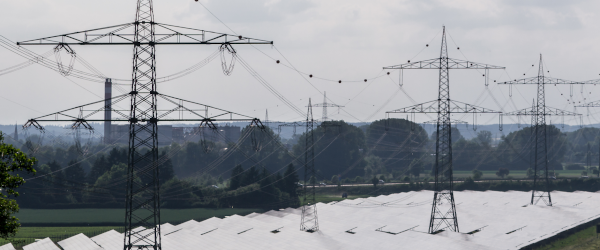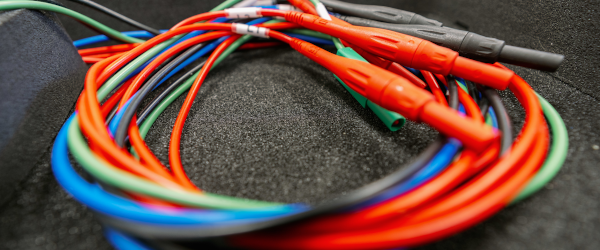Power Quality in Medium Voltage networks
For various reasons, interest in the continuous monitoring of network quality in medium-voltage networks has been increasing rapidly. The same thing applies for electricity as for any other product, quality assurance. Valuable information concerning network conditions is also available.
Medium voltage networks (6 to 64 kV) are usually implemented as compensated networks. Networks with low spatial expansion are implemented with an insulated neutral point, in extensive networks and cable networks a Petersen-Coil is used. From 132 kV, networks are always solidly earthed.
When there is an earth fault in a conductor in the MV network, the voltage of the two healthy phase increases with respect to earth by a factor of 1.73 (external conductor voltage). This means a greater load on the insulation of this conductor and all other components (insulators, transformer…), which can cause an additional earth fault (double earth fault) or a network short circuit.
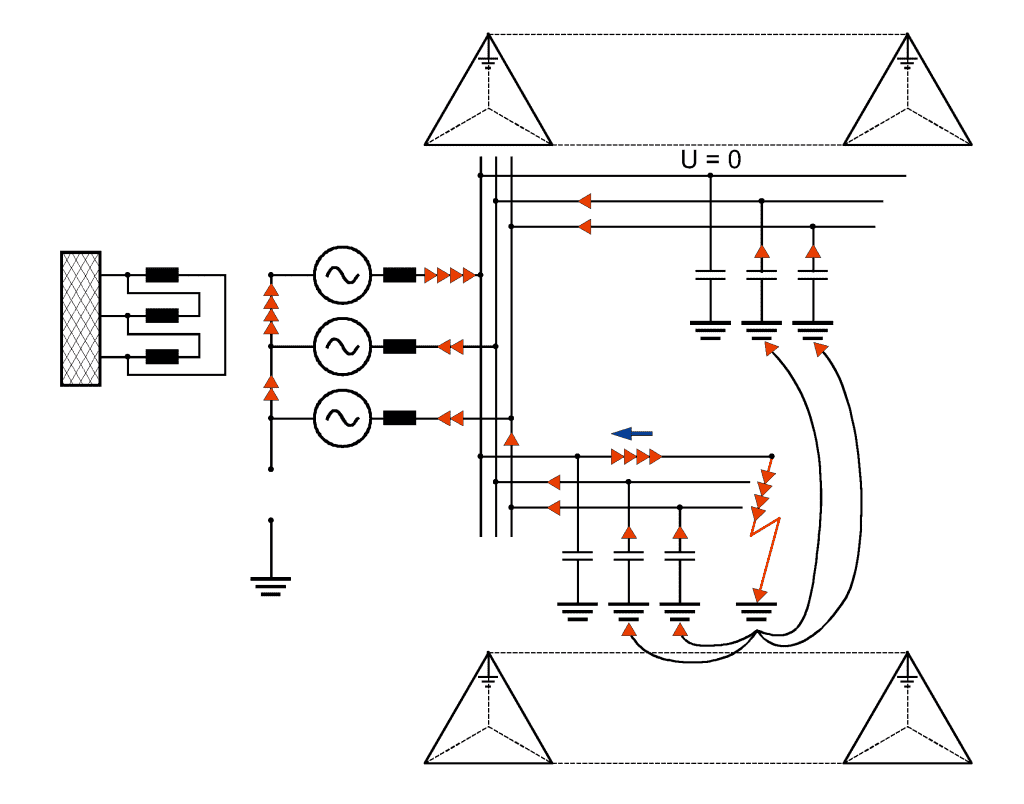
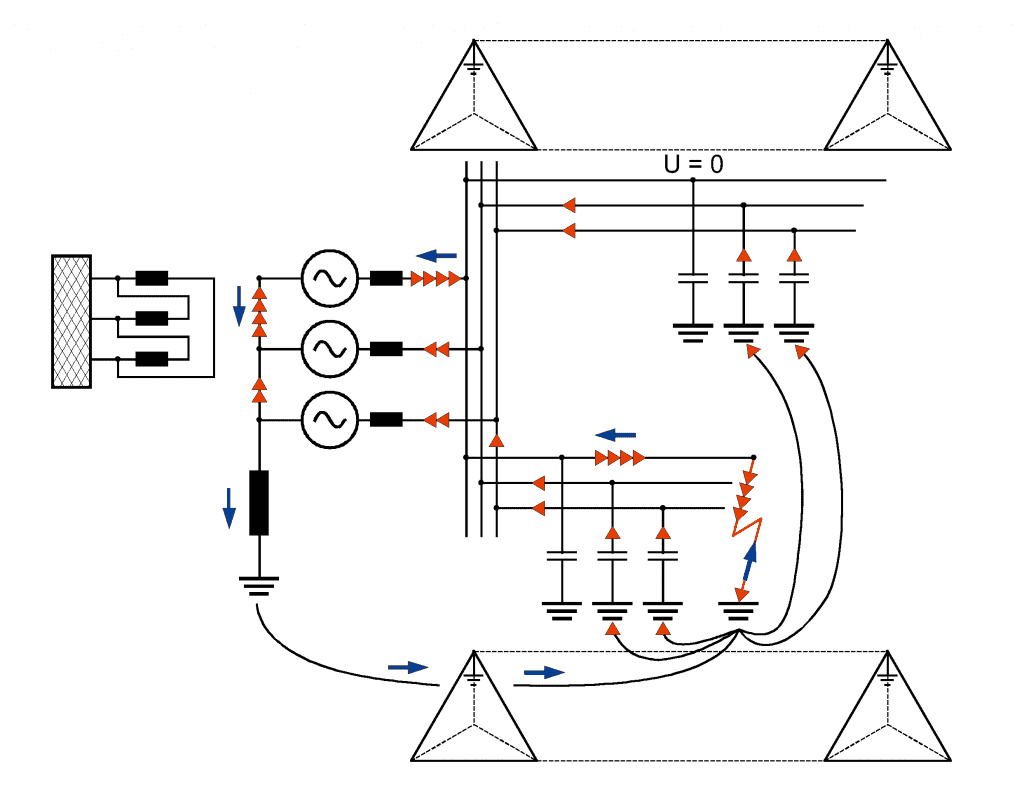
If an inductance (Petersen coil) is connected between network neutral point N and earth E , an inductive earth fault inductance current flows through it that can compensate for the capacitive earth fault current at the fault location, with suitable dimensioning of the inductance. Nothing changes with respect to the increase in the voltage in the healthy conductors.
What type of connection should be chosen for the measurement of fault records and for assessing the voltage quality in accordance with EN 50160?
EN 50160 in Low Voltage and Medium Voltage networks
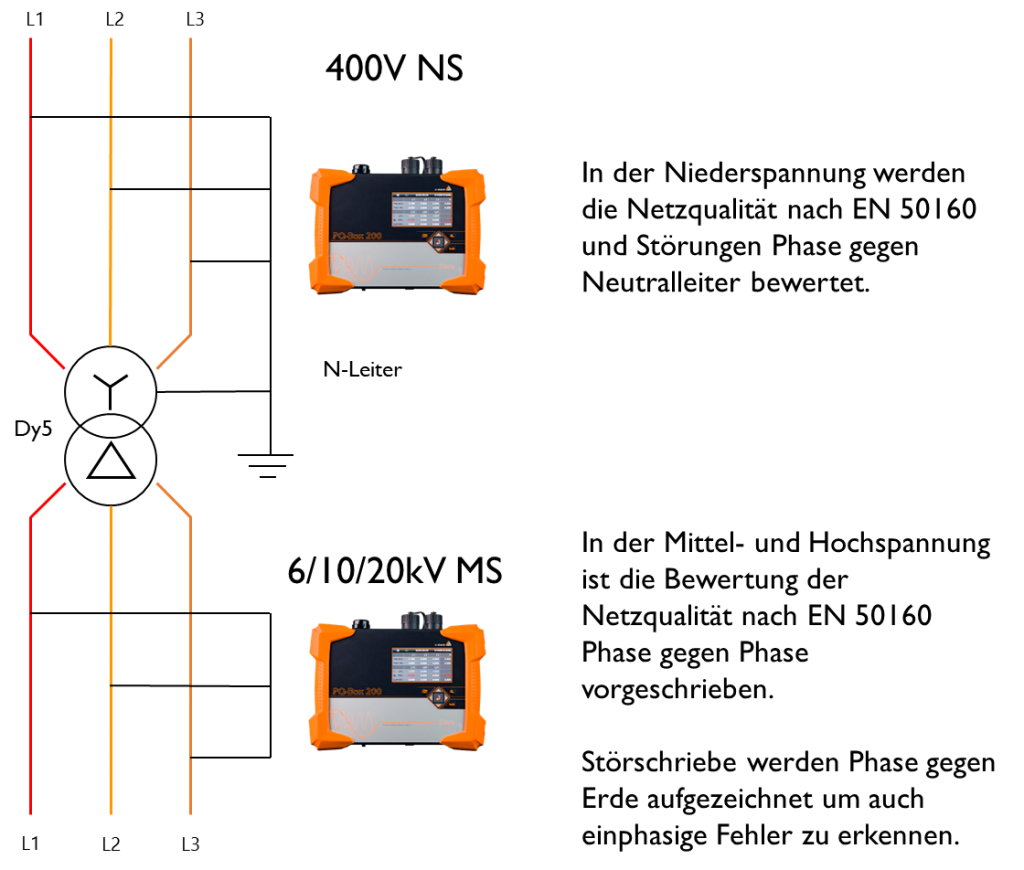
Recording a disturbance as an oscilloscope image with the Fault Recorder and Network Analyzer PQI-D.
Measurement of phase to earth:
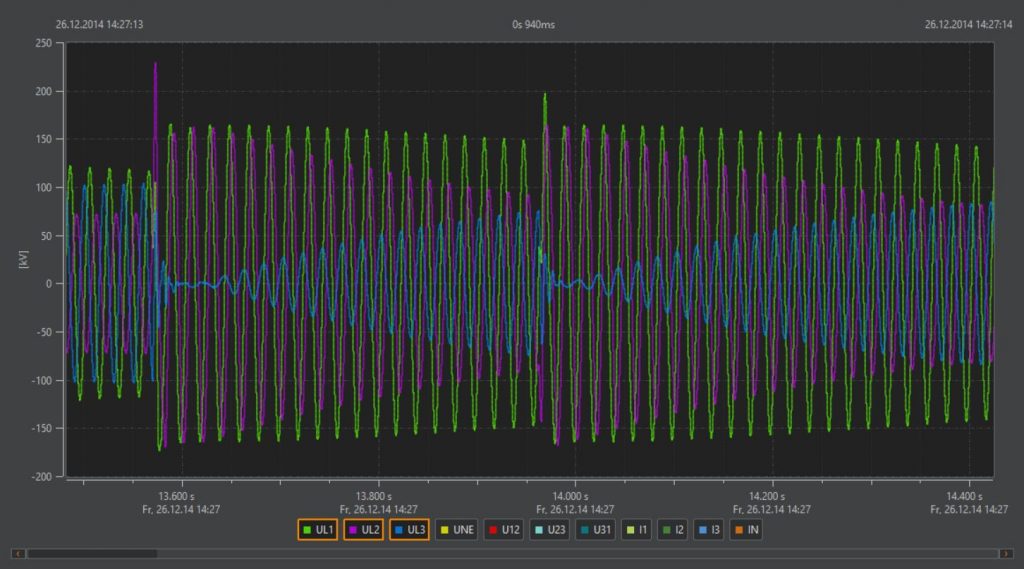
With this single-phase earth fault in a 110 kV network, the increase in the two healthy conductors and the factor of 1.73 can be easily seen.
Recording of the same fault as a 10ms RMS record of the phase – earth – voltages:
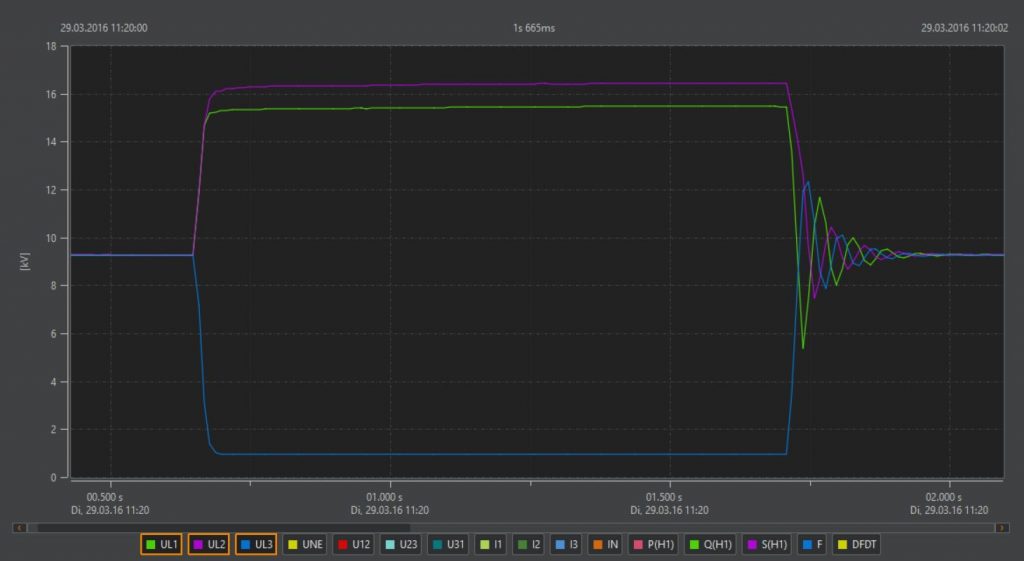
Using these recordings it is possible to be able to assess the nature of the fault in an MV network, but the effect of this error on the low-voltage network cannot be identified.
For the assessment of the fault that has been detected at the low-voltage side or the end consumer has noticed, the phase-to phase fault is evaluated because a consumer that is supplied with a voltage across a transformer is only supplied on the low voltage side.
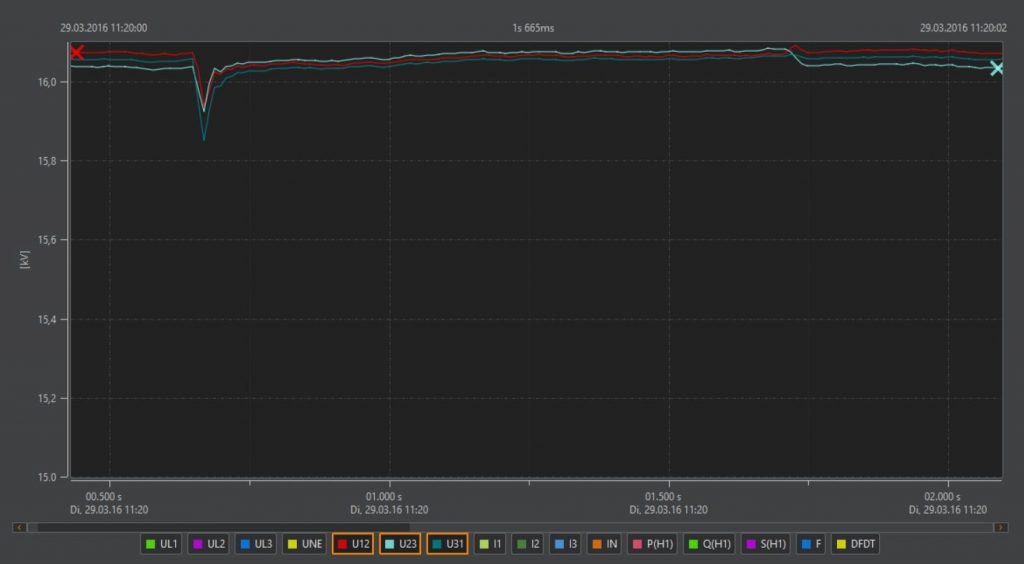
In this phase-phase recording, a drop in the medium voltage of 1% can be seen, which the end consumer has also received as approximately 1% would hardly have noticed.
All of the limits in the EN 50160 standard (flicker, harmonic, voltage fluctuations, network imbalance, etc.) in the medium voltage network are with reference to the concatenated voltages. Conversion of an effective measured value over the continuous voltages is no longer possible retrospectively.
EN 50160 does not apply for high-voltage networks, here the standards are IEC 61000-3-6 for harmonics and 61000-3-7 for flicker with lower limit values as specified in EN 50160.
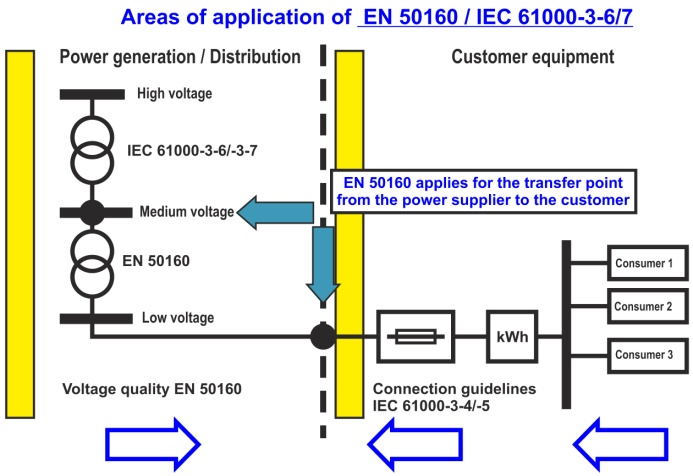
Parameter from EN 50160 with limits for the public low-voltage network and medium-voltage network.




